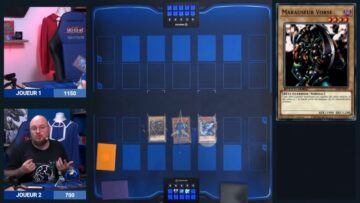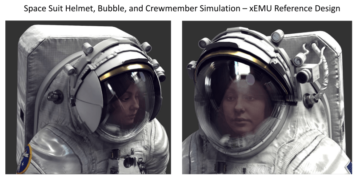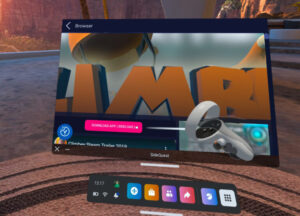The company states that its new platform will serve as the backbone for its rapidly-growing metaverse.
During today’s Facebook Connect conference, Facebook rolled out its vision of the metaverse in a series of exciting announcements. This includes the Presence Platform, a suite of new tools that will let you build more connected experiences that allow you to move easily between worlds.
Along with keeping you connected, the Presence Platform also features a set of incredible tools that you can use to create a wide range of unique mixed reality environments, interactions, and voice experiences. These new capabilities, along with the metaverse building blocks that already exist, will serve as the backbone of Facebook’s metaverse experience.
INSIGHT SDK
Insight SDK allows you to build mixed reality experiences that deliver a real sense of presence. Earlier in the year Facebook shipped Passthrough API Experimental to developers and encouraged them to build groundbreaking mixed reality content. Developers wasted no time creating unique experiences that effectively showcased the potential of Oculus Passthrough technology.
Facebook today announced that everyone will have access to Passthrough technology in the next release, letting you build, test, and ship experiences using Passthrough capabilities.
Also announced was developer access to Spatial Anchors. These world-locked frames of reference allow you to create and permanently place virtual content in a physical space. Virtual objects tethered to Spatial Anchors will remain in their designated positions across sessions. Then there’s Spatial Anchors Experimental, which will let you create Spatial Anchors in specific 6DoF poses, track the 6DoF pose relative to a VR headset, persist Spatial Anchors on-device, and then retrieve a list of currently tracked Spatial Anchors.
By using Passthrough and Spatial Anchors together, developers gain access to additional Scene Understanding capabilities. Using Scene Understanding, you’re able to easily create complex and scene-aware experiences that interact with your environment using Scene Model, which will give you a geometric and somatic representation of your space allowing you to build out room-scale mixed reality experiences.
You can, for example, attach a virtual screen to a physical wall or navigate a virtual character withrealistic occlusion throughout your real-world environment. Furthermore, this technology allows you to bring physical objects into VR. To create this Scene Model, Facebook will provide a system-guided Scene Capture flow that lets you walk around and capture your scene. Scene Understanding capabilities will be available as an experimental capability early next year.
Of course, privacy is important. Facebook designed Passthrough, Spatial Anchors, and Scene Understanding so that developers can create mixed reality experiences without the use of raw images or videos from your Quest sensors.
INTERACTION SDK
With Interaction SDK Experimental, Facebook is making it easier for you to integrate hands and controller-centric interactions while in VR. The Unity Library, available early next year, will come with a set of ready to use, interaction components like grab, poke, target, and select. Components can be used together, independently, or integrated into other interactions. Interaction SDK makes it easier for you by solving many of the tough interaction challenges linked to computer vision-based hand tracking. It offers standardized interaction patterns and prevents regressions as the technology evolves. Last but not least, you are able to build your own custom gestures as well.
TRACKED KEYBOARD SDK
Tracked Keyboard capabilities for developers were announced last year. Not a lot was mentioned on this other than that the company is working hard to launch a Tracked Keyboard SDK early next year as part of Presence Platform.
VOICE SDK
Voice SDK Experimental is a set of capabilities focused on using natural language, allowing you to create hands-free navigation and voice-driven gameplay. The potential use-cases for this kind of technology are virtually endless. Imagine an experience where you win a battle by yelling out a magic spell or using your own voice to barter with an in-game merchant. Voice SDK will be powered by Facebook’s Wit.ai natural language platform.
Both Presence Platform and the Oculus Platform SDK are designed to work together, so you’ll be able to use both in tandem to create mixed reality experiences and natural interactions on Oculus Quest devices. Developer documentation will be available in Facebook’s upcoming releases so you can start prototyping.
To show off the potential of its Presence Platform, Facebook created a sample experience called The World Beyond for you to check out.
Feature Image Credit: Facebook
Source: https://vrscout.com/news/facebooks-presence-platform-offers-new-mixed-reality-tools/
- access
- Additional
- AI
- Allowing
- announced
- Announcements
- api
- around
- Battle
- build
- Building
- company
- Conference
- content
- Creating
- credit
- Developer
- developers
- Devices
- Early
- Environment
- experience
- Experiences
- Features
- flow
- gameplay
- grab
- hand tracking
- Headset
- HTTPS
- image
- interaction
- IT
- keeping
- language
- launch
- Library
- List
- Making
- Merchant
- Metaverse
- mixed
- mixed reality
- model
- move
- Natural Language
- Navigation
- New Platform
- Oculus
- Oculus Quest
- Offers
- Other
- physical
- platform
- Poke
- privacy
- prototyping
- quest
- range
- Raw
- Reality
- Releases
- Screen
- sdk
- sense
- sensors
- Series
- set
- So
- Space
- Spatial
- start
- States
- Target
- Technology
- test
- The Metaverse
- time
- track
- Tracking
- unity
- use-cases
- Videos
- Virtual
- vision
- Voice
- vr
- VR Headset
- win
- Work
- world
- year













